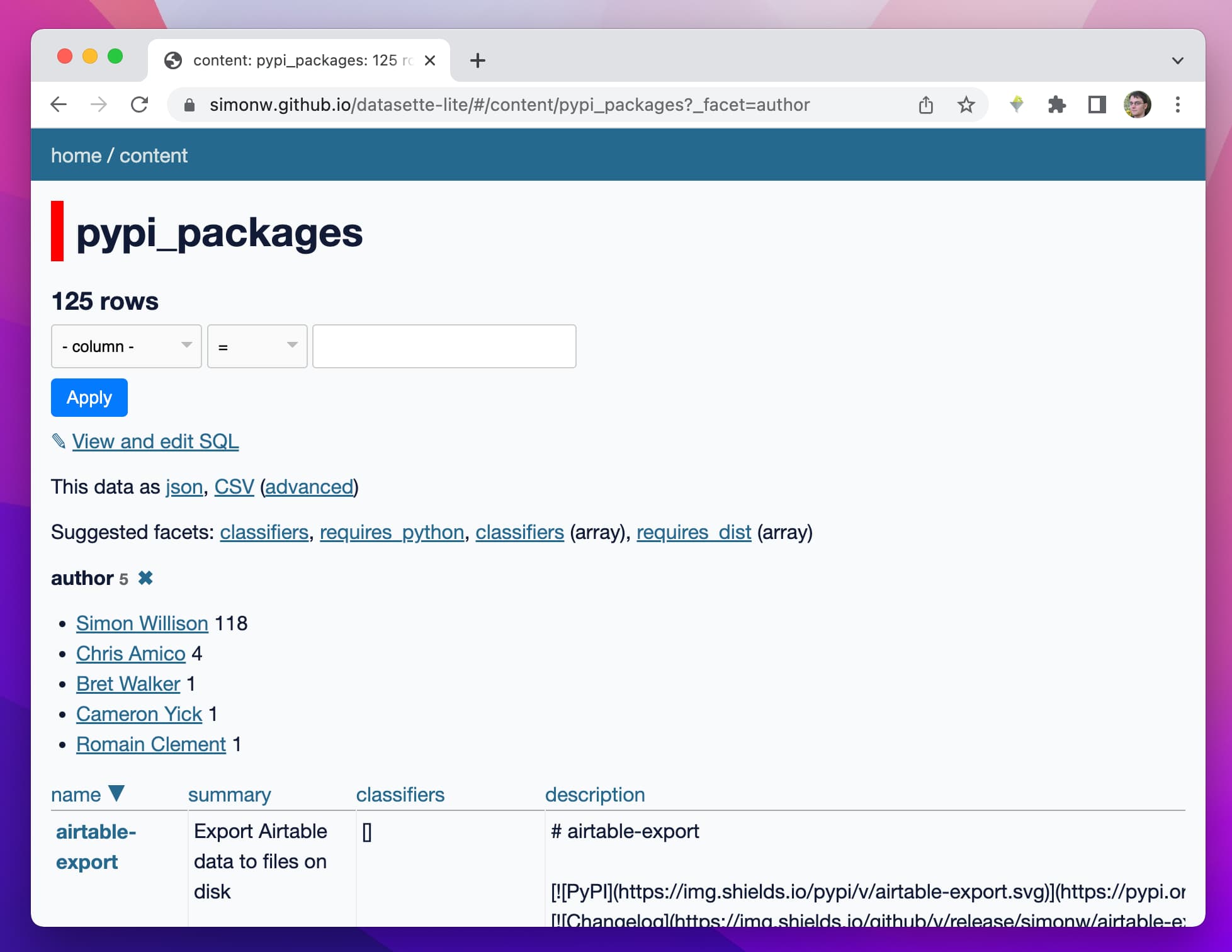Posts tagged javascript in 2022
Filters: Year: 2022 × javascript × Sorted by date
Draw SVG rope using JavaScript (via) Delightful interactive tutorial by Stanko Tadić showing how to render an illustration of a rope using SVG, starting with a path. The way the tutorial is presented is outstanding.
three.js examples: webgl_postprocessing_pixel (via) Neat new example for three.js that uses a pixel-shader postprocessor to apply an isometric pixel-art feel to a 3D scene.
About the sqlite3 WASM/JS Subproject. SQLite now maintains an official WebAssembly build. It’s influenced by sql.js but is a fresh implementation with its own API design. It also supports Origin-Private FileSystem (OPFS)—a very new standard which doesn’t yet have wide browser support that allows websites to save and load files using a dedicated folder on the host machine.
Fastly Compute@Edge JS Runtime (via) Fastly’s JavaScript runtime, designed to run at the edge of their CDN, uses the Mozilla SpiderMonkey JavaScript engine compiled to WebAssembly.
Shoelace (via) Saw this for the first time today: it’s a relatively new library of framework-agnostic Web Components, built on lit-html and covering a huge array of common functionality: buttons and sliders and dialogs and drawer interfaces and dropdown menus and so on. The design is very clean, the documentation is superb—and it looks like you can cherry pick just the components you are using for a pretty lean addition to your page weight. So refreshing to see libraries like this that really take advantage of modern web standards.
Promise Maps. Egbert Teeselink describes a neat JavaScript caching pattern: instead of caching key:value cache key:promise-that-resolves-to-value—doing this gives you dog piling prevention for free, because the first lookup of a value trigers the computation to fetch it while subsequent lookups wait on the same promise to resolve—or resolve instantly if the computation has completed.
Bringing page transitions to the web (via) Jake Archibald’s 13 minute Google I/O talk demonstrating the page transitions API that’s now available in Chrome Canary. This is a fascinating piece of API design—it works by effectively creating a static image screenshot of the before and after states of the transition, then letting you define CSS animations that animate a transition between the two static images. By default the screenshot encompasses the full viewport, but you can instead define multiple elements within the page and apply separate transitions to them. It’s only available for SPAs right now but the final design should include support for multi-page applications as well—which means transitions with no JavaScript needed at all!
Helpful 404s for Jekyll (and GitHub Pages). Neat trick from Ben Balter: JavaScript that runs on your 404 page, fetches the sitemap.xml, parses all of the URLs out of it and then uses a levenshtein edit-distance comparison to find the closest URL to the one that you landed on and suggests that as a “Perhaps you’re looking for?”.
Bun. “Bun is a fast all-in-one JavaScript runtime”—this is very interesting. It’s the first project I’ve seen written using the Zig language, which I see as somewhat equivalent to Rust. Bun provides a full Node.js-style JavaScript environment plus a host of packaged tools—an npm install client, a TypeScript transpiler, bundling tools—all wrapped up in a single binary. The JavaScript engine itself extends JavaScriptCore. Bun also ships with its own wrapper for SQLite.
The general idea of an “Islands” architecture is deceptively simple: render HTML pages on the server, and inject placeholders or slots around highly dynamic regions. These placeholders/slots contain the server-rendered HTML output from their corresponding widget. They denote regions that can then be "hydrated" on the client into small self-contained widgets, reusing their server-rendered initial HTML.
The balance has shifted away from SPAs (via) “There’s a feeling in the air. A zeitgeist. SPAs are no longer the cool kids they once were 10 years ago.” Nolan Lawson offers some opinions on why the pendulum seems to be swinging back in favour of server-side rendering over rendering every page entirely on the client. He argues that paint holding, back-forward caching and service workers have made the benefits of SPAs over MPAs much less apparent. I’m inclined to agree.
Datasette Lite: a server-side Python web application running in a browser
Datasette Lite is a new way to run Datasette: entirely in a browser, taking advantage of the incredible Pyodide project which provides Python compiled to WebAssembly plus a whole suite of useful extras.
[... 4,800 words]Web Scraping via Javascript Runtime Heap Snapshots (via) This is an absolutely brilliant scraping trick. Adrian Cooney figured out a way to use Puppeteer and the Chrome DevTools protocol to take a heap snapshot of all of the JavaScript running on a web page, then recursively crawl through the heap looking for any JavaScript objects that have a specified selection of properties. This allows him to scrape data from arbitrarily complex client-side web applications. He built a JavaScript library and command line tool that implements the pattern.
HTML event handler attributes: down the rabbit hole
(via)
onclick="myfunction(event)" is an idiom for passing the click event to a function - but how does it work? It turns out the answer is buried deep in the HTML spec - the browser wraps that string of code in a function(event) { ... that string ... } function and makes the event available to its local scope that way.
SQLime: SQLite Playground (via) Anton Zhiyanov built this useful mobile-friendly online playground for trying things out it SQLite. It uses the sql.js library which compiles SQLite to WebAssembly, so it runs everything in the browser—but it also supports saving your work to Gists via the GitHub API. The JavaScript source code is fun to read: the site doesn’t use npm or Webpack or similar, opting instead to implement everything library-free using modern JavaScript modules and Web Components.
